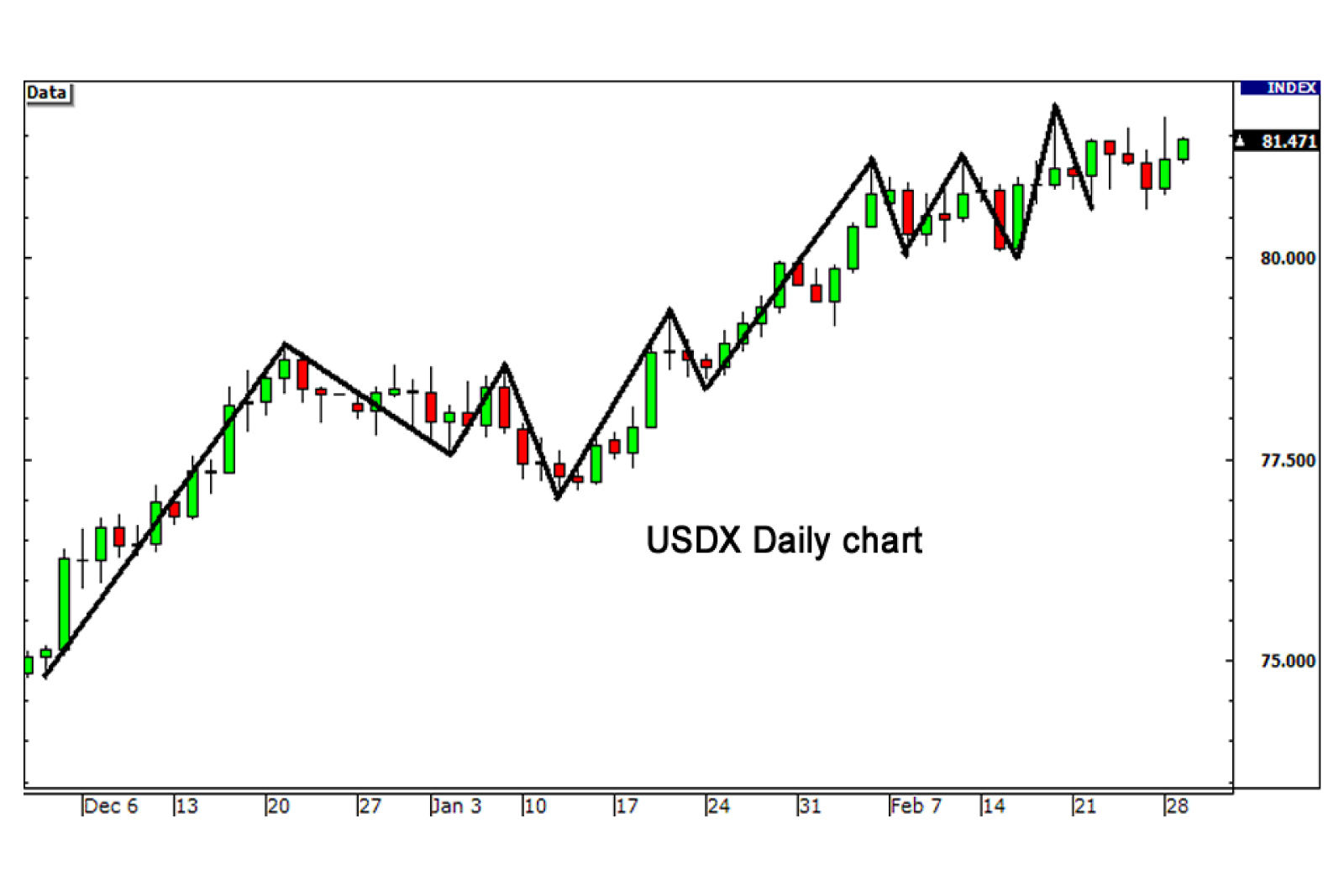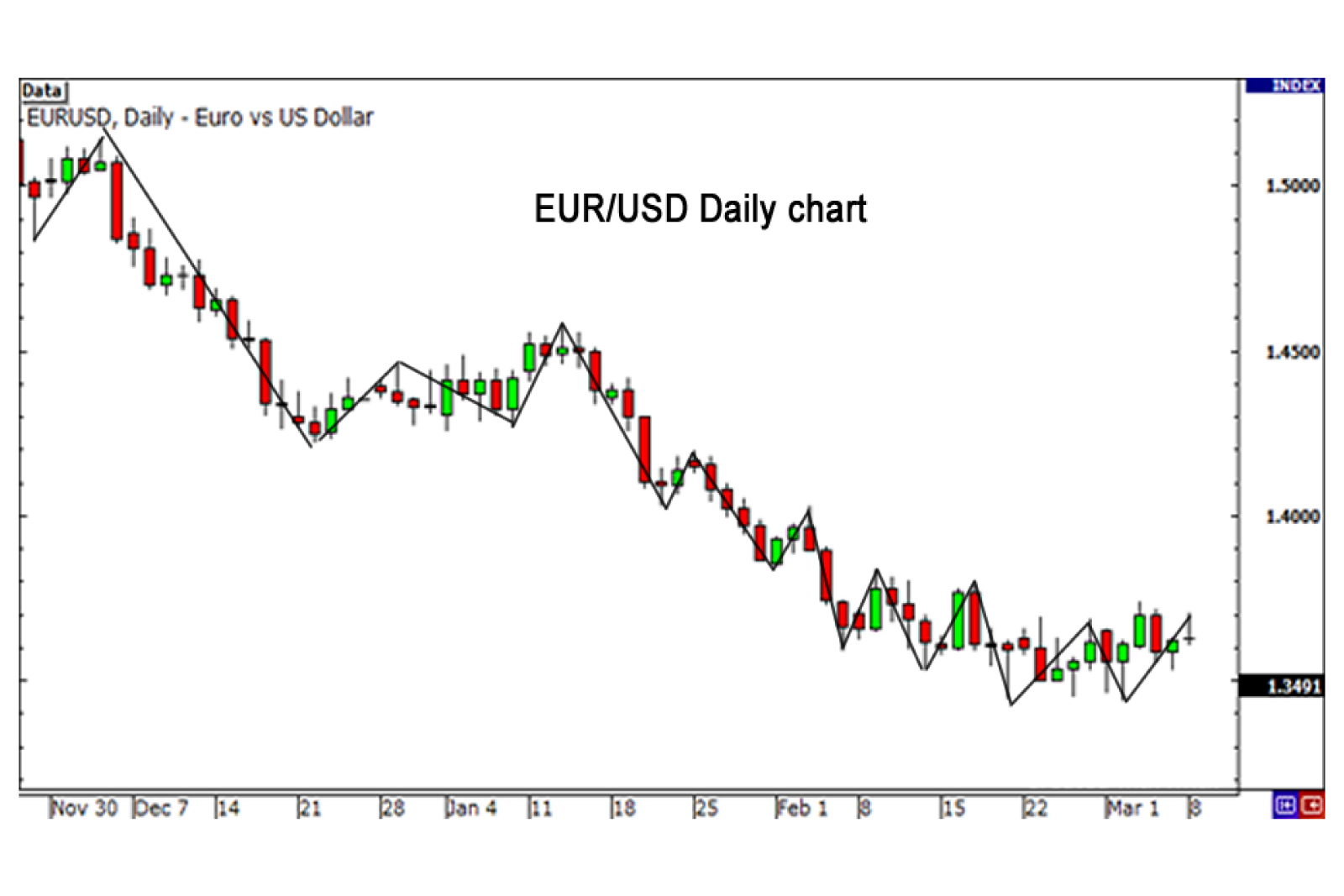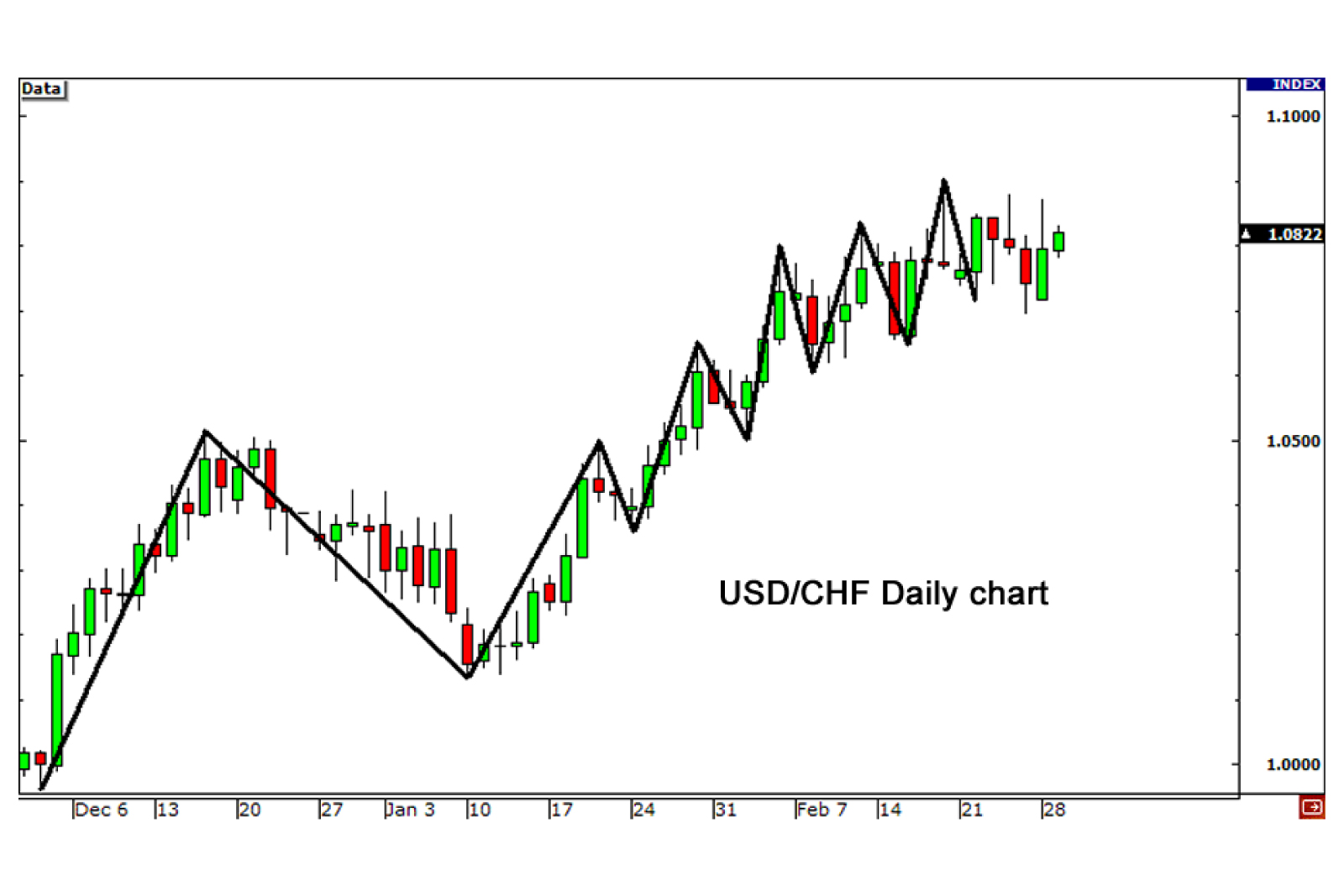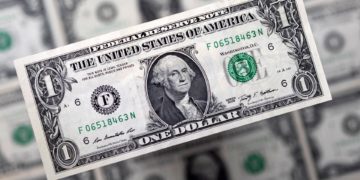I bet you’re wondering, “How do I use this USDX in my trading arsenal?”
Well, hold your trigger finger and you’ll soon find out! We all know that most of the widely traded currency pairs include the U.S. dollar.
If you don’t know, some that include the U.S. dollar are EUR/USD, GBP/USD, USD/CHF, USD/JPY, and USD/CAD.
What does this mean? If you trade any of these pairs, the USDX can be the next best thing to sliced bread (or hamburger on a bun… or chocolate ice cream).
If you don’t, the USDX will still give you an idea of the relative strength of the U.S. dollar around the world.
In fact, when the market outlook for the U.S. dollar is unclear, more often times than not, the USDX provides a better picture.
In the wide world of forex, the USDX can be used as an indicator of the U.S. dollar’s strength.
Because the USDX is comprised of more than 50% by the euro zone, EUR/USD is quite inversely related. Check it:

Next, take a look at a chart of EUR/USD.

It’s like a mirror image! If one goes up, the other most likely goes down.
Will you look at that? It seems like the trend lines almost inversely match up perfectly. This could be a big help to those big on trading EUR/USD.
Some of our forex trading friends in the forums monitor the USDX as an indicator for EUR/USD. Hang out with them if you wanna learn more about using this index.
If the USDX makes significant movements, you can almost surely expect currency traders to react to the movement accordingly.
Both the USDX and forex traders react to each other. Breakouts in spot USD pairs will almost certainly move the USDX in a similar breakout fashion.
To sum it all up, forex traders use the USDX as a key indicator for the direction of the USD.
Always keep in mind the position of the USD in the pair you are trading.
For example, if the USDX is strengthening and rising, and you are trading EUR/USD, a strong USD will show a downtrend on the EUR/USD chart.
If you are trading a pair in which the USD is the based currency, such as the USD/CHF, a rise in the USDX will most likely show a rise in USD/CHF charts like the one shown below.


Here are two little tips you should always remember:
- If USD is the base currency (USD/XXX), then the USDX and the currency pair should move the same direction.
- If USD is the quote currency (XXX/USD), then the USDX and the currency pair should move in opposite directions.











































